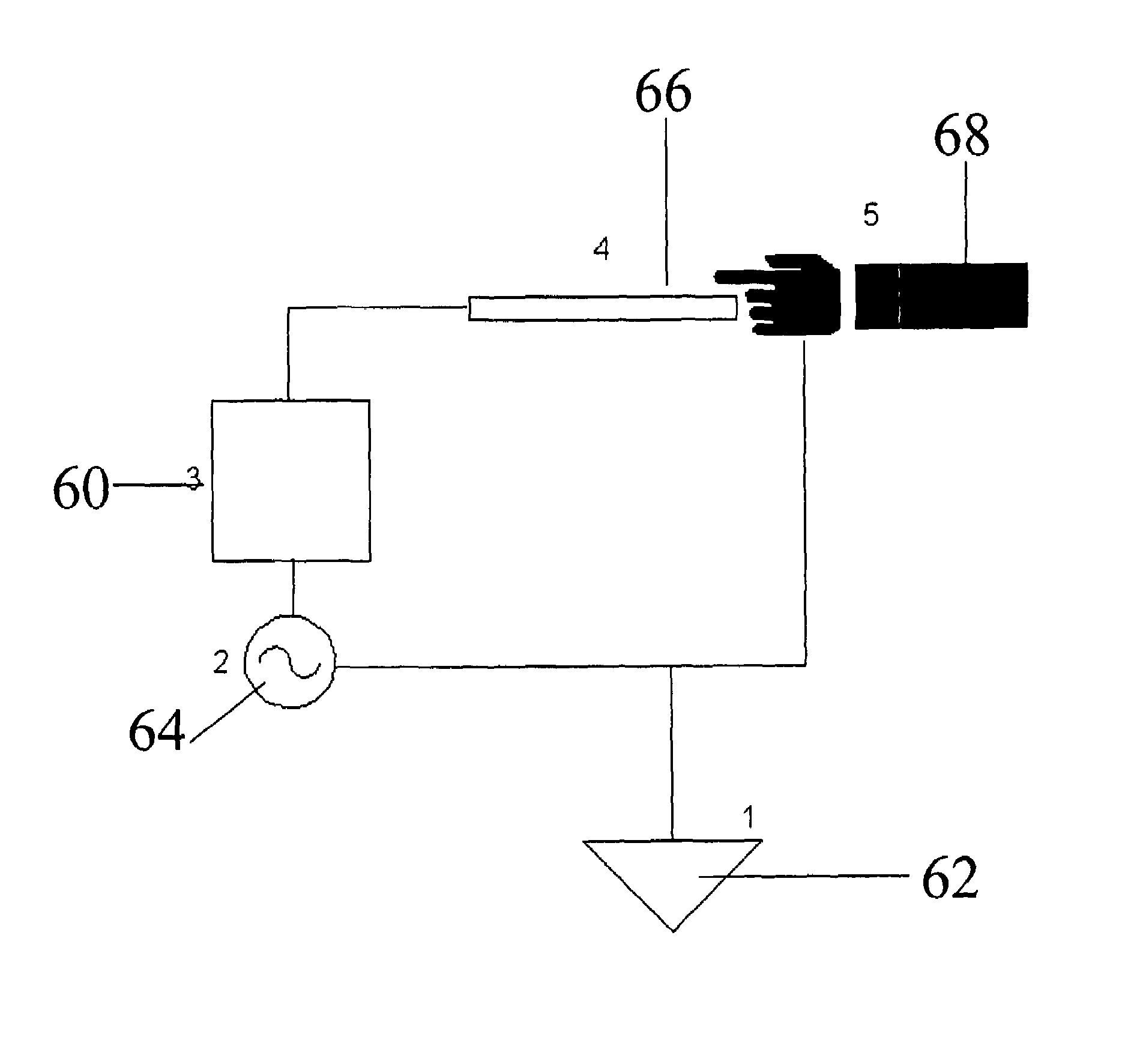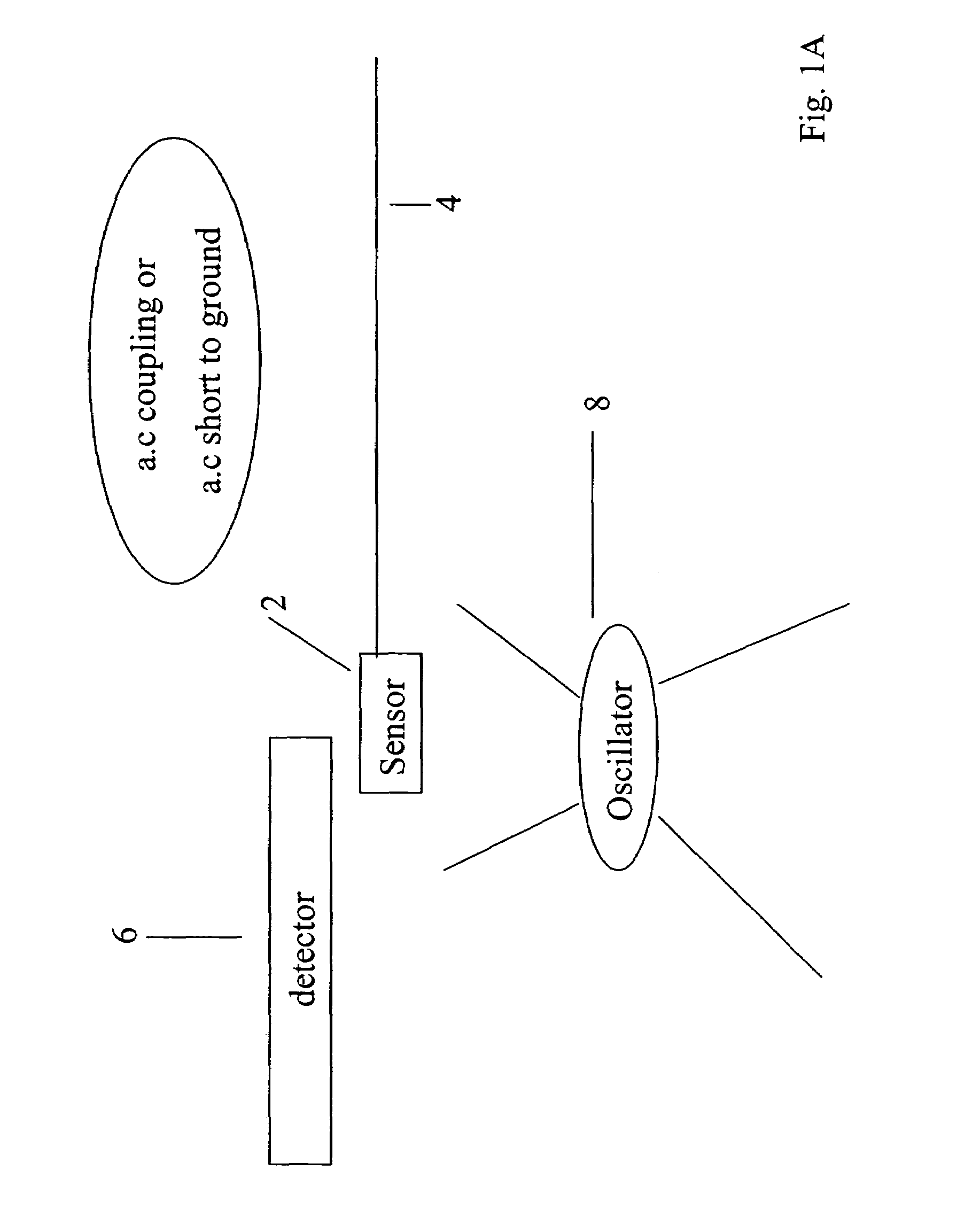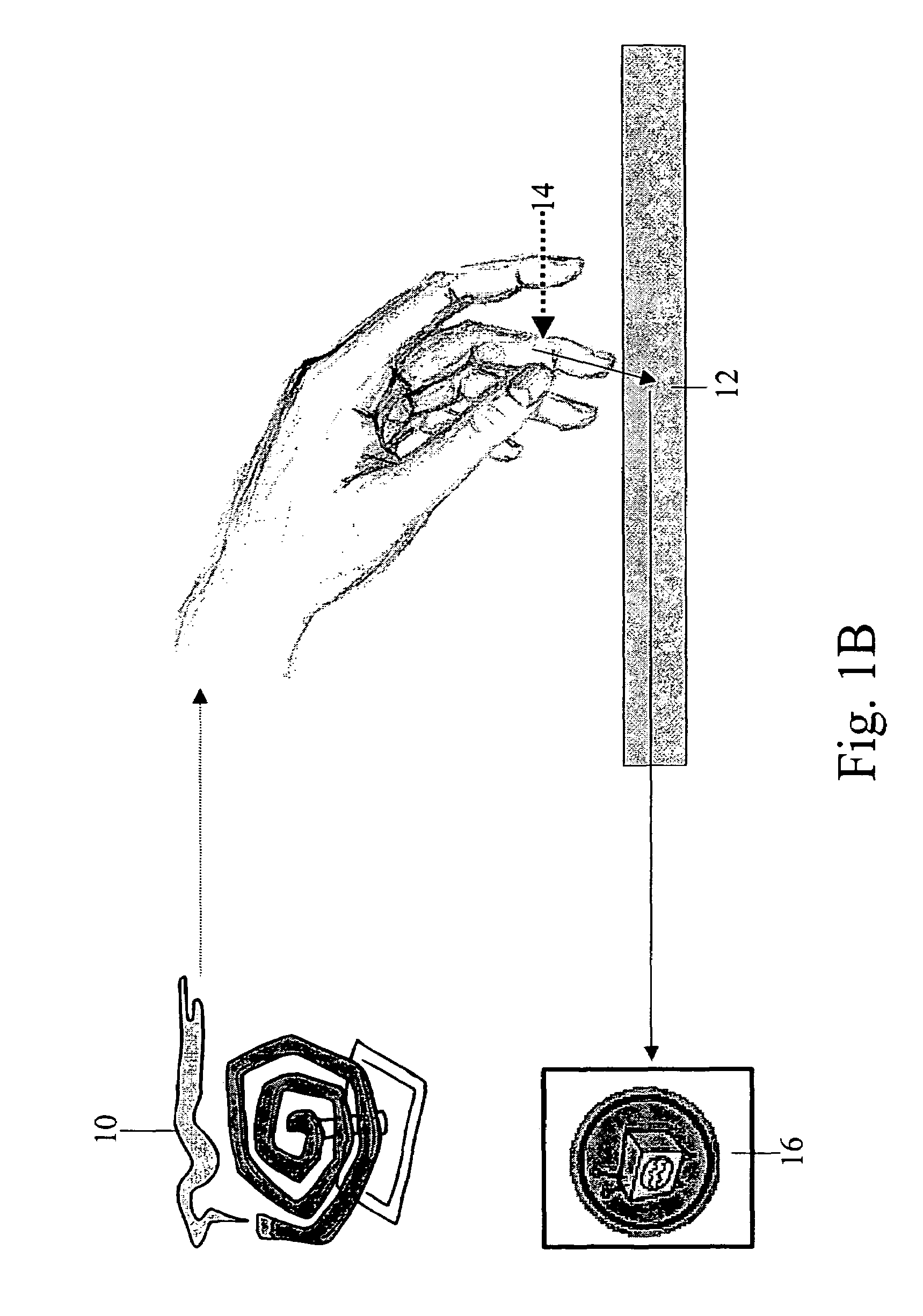Touch detection for a digitizer
a digitizer and touch detection technology, applied in the direction of user-computer interaction input/output, instruments, computing, etc., can solve the problems of inability to specifically detect an electromagnetic type stylus, low detection resolution of the stylus, and additional complexity of both sensors and electronics
- Summary
- Abstract
- Description
- Claims
- Application Information
AI Technical Summary
Benefits of technology
Problems solved by technology
Method used
Image
Examples
first embodiment
[0145]i. First Embodiment
[0146]This method utilizes an electromagnetic wave transmitted from either an external source or by the sensor components and received by the user body. When the user's finger touches the sensor the EM energy transfers from the user to the sensor. The detector processes the signal and determines the finger's position.
[0147]Reference is now made to FIG. 1B, which is a general description of a first finger detection apparatus according to the present invention. An external source 10 transmits electromagnetic wave energy, which is absorbed by the user's body. If the user now touches the sensor 12 a capacitance is formed between the finger 14 and the sensor conductors. The received signal is at a frequency that allows it to pass through the capacitance at the level typically formed, and thus the received signal passes from the user's finger 14 to the sensor 12. Detector 16, which processes the sensed signals, determines the position of the user's finger.
[0148]In...
second embodiment
[0162]ii. Second Embodiment
[0163]The second embodiment does not require transmitting an EM signal to the user's body. Rather, even without the influence of an EM signal, the user's finger adds a capacitance that connects two orthogonal sensor lines.
[0164]Reference is now made to FIG. 2, which is a general description of the second finger detection embodiment of the present invention. A two-dimensional sensor matrix 20 lies in a transparent layer over an electronic display device. An electric signal 22 is applied to a first conductor line 24 in the two-dimensional sensor matrix 20. At each junction between two conductors a certain minimal amount of capacitance exists. A finger 26 touches the sensor 20 at a certain position and increases the capacitance between the first conductor line 24 and the orthogonal conductor line 28 which happens to be at or closest to the touch position. As the signal is AC, the signal crosses by virtue of the capacitance of the finger 26 from the first cond...
third embodiment
[0174]iii. Third Embodiment
[0175]The third embodiment uses a potential difference between the user's finger and the system to determine the finger position.
[0176]Reference is now made to FIG. 4, which is a simplified schematic diagram illustrating the third preferred embodiment of the finger detection of the present invention. A detector 60 is connected to ground 62. The detector is connected to an oscillator 64 that provides an alternating signal which can cause the detector potential to oscillate with respect to ground potential. The oscillating potential is applied to sensor 66.
[0177]In operation the detector 62 oscillates in reference to the common ground potential. As a user's finger 68 touches the sensor 66, a capacitance is formed between the finger and the sensor conductors. Now the user's body potential does not oscillate in reference to earth while the sensor's potential does oscillate in reference to the common ground potential. Thus an alternating difference in potential...
PUM
 Login to View More
Login to View More Abstract
Description
Claims
Application Information
 Login to View More
Login to View More - R&D
- Intellectual Property
- Life Sciences
- Materials
- Tech Scout
- Unparalleled Data Quality
- Higher Quality Content
- 60% Fewer Hallucinations
Browse by: Latest US Patents, China's latest patents, Technical Efficacy Thesaurus, Application Domain, Technology Topic, Popular Technical Reports.
© 2025 PatSnap. All rights reserved.Legal|Privacy policy|Modern Slavery Act Transparency Statement|Sitemap|About US| Contact US: help@patsnap.com



